Hi Readers: Part II covers, primarily, the fatal and nonfatal accidents with indicated causes and analysis where possible. All told, Cessna Aircraft dominated the accident picture with 21 accidents/Incidents. And this would be expected since there are more Cessna aircraft flying in GA; also dominating the small jet inventory. In fact, Cessna Aircraft, owned by Textron, Inc. (a $10 Billion industry in 33 countries) is the largest manufacturer of GA airplanes. It is of note that Textron, Inc. also owns Bell Helicopter, Lycoming Engines, and other companies in the aviaation industry. Therefore, considering the exposure, we don't tag Textron or Cessna as a bad accident actor. The individual accident rates tell the story.
Of the fatal accidents, a Cessna 500 topped the list, on a day X-C flight after takeoff from Wiley Post airport at Oklahoma City, Oklahoma. The ATP instrument rated pilot and 3 passengers sustained fatal injuries. Loss of control and impact with terrain occurred under VFR conditions on an IFR flight plan. A qualified aviation witness indicated a right engine compressor stall, the aircraft descending 60-70 degrees nosedown and observed pieces of bird falling. A Cessna 172 accident followed with 4 fatalities on a day VFR bird survey flight, with loss of control and impact with the ground. The aircraft was observed in low flight to strike the ground under power. A 2 fatal Cessna T210M collided with terrain on an instrument X-C night flight from Baton Rouge to Lafayette, LA. The instrument rated pilot was receiving vectors for an instrument approach to R/W4R at Abbeville, La. The weather was reported as multi-layered clouds with heavy rain showers. A Canadian Cessna 182B impacted a swamp near Wilwood, FL. while maneuvering near a private ranch at night under VFR conditions. The non-instrument pilot and passenger sustained fatal injuries. The night was reported as dark, the ceiling between 800' and 1,000'. Another Cessna 172 crashed at Gun Barrel City, TX. after striking power lines on a day VFR flight from Athens, Tx. One fatal and one serious injury was reported.
A day ground collision occurred at Titusville, FL. airport when a Velocity XC RG aircraft and a Vans RV-8 came together on R/W 15 after landing in VFR conditions. Both aircraft were arriving for an Experimental Aircraft Association breakfast at Titusville. Four RV-8s had exited the runway at Intersection B after landing. The Veocity XC landed, following the 4 aircraft and departed the runway entering a grassy area separating R/W 15 and the taxiway. The pilot applied full power in a left bank (apparently trying to avoid the collision). The Velocity XL commercial pilot sustained serious injury and his passenger sustained fatal injuries. In the Vans RV 8 airplane that was struck, the ATP pilot and a pilot rated passenger received fatal injuries.
There were 3 Cirrus SR22 accidents during the period, one a non-U.S., losing power on a day takeoff and impacting a building. It was reported that the aircraft had been refueled with Jet A-1 instead of gasolene. The pilot and 3 passengers sustained fatal injuries. Another Cirrus SR22 aircraft impacted a mountain under power shortly after a marginal weather night takeoff on a X-C IFR flight plan flight to Baltimore from FT. Royal, VA. The elevation of the FT. Royal airport was 709' msl and the elevation of the mountain ridge was 1,200' msl. The pilot possessed a 3rd class medical certificate and had a total flight time of 180 hours; however he had an instrument rating. The reported weather was strictly IFR conditions. The aircraft was equipped with Engine Multifunction and Primary Flight Display. The pilot and a passenger sustained fatal injuris. One other Cirrus SR22 collided with trees on a day VFR approach to R/W6 at Weddington, NC. The pilot sustained fatal injuries.
There were 2 Mooney M20C accidents, both on day X-C flights. One was an inflight breakup of the aircraft offshore of the Grand Bahamas. Fishermen reported a loud noise and saw what appeared to be the engine and other components falling in the sky. The flight departed the Grand Bahamas Int'l airport en route to the ST. Lucie airport, FL. The pilot and a passenger sustained fatal injuries. The other Mooney M20C accident occurred near Atkins, VA., impacting terrain during an IFR flight from Charleston, West VA. to Jacksonville, FL. Cruising at 6,200' MSA (Minimum safe Altitude), the pilot reported icing and requested a lower altitude. Because of the MSA the Controller gave the pilot a 30 degree turn and asked if he would like to climb to 8,000' (another pilot 30 miles to the East reported cloud tops at 7,500'). The pilot reported that he would. Three minutes later the pilot advised that he was lossing altitude. There was no further communication. Radar data showed a climb to 6,500' before losing altitude. The crash site indicated a vertical descent. The Canadian pilot did not have an instrument rating. His total flight time was 327 hours, 10 hours of which was actual instrument flight. He had 10 hours of simulated instrument time. The weather was heavy IFR conditions.
A Ritter RV10 amateur-built aircraft impacted terrain, following loss of control in cruise flight near Ledbetter, Tx. The weather was VFR conditions. The pilot sustained fatal injuries. A Jenkins RV7 experimental aircraft crashed on a VFR day flight on takeoff at Winslow, AZ. The aircraft climbed nosehigh, rolled left, and struck the ground nose low. The pilot lost control and sustained fatal injuries. This was the first flight since engine repair. A PA-28-161 impacted water shortly after takeoff from Venice, FL. during night VFR conditions. This was the commercial pilot's first flight at night in the aircraft after a day checkout. The pilot sustained fatal injuries.
There were 44 nonfatal accidents, including one Bell 206B helicopter. The nonfatal accidents represented a myriad of GA aircraft types, including 11 Cessna types (one 525B Citation), 4 Piper types, 2 Beech types, 2 Diamond aircraft types, a Great Lakes aircraft, 6 helicopters, 2 Maule M4's, and a host of other types (12). There was one interesting accident at Tracy, CA. A certified flight instructor, with a student, was demonstrating an engine failure during takeoff initial climb by executing an 180-degree turn back to the airport. He then initiated a go-around by applying full power. The airplane, an American Champion 7GCAA, stalled and impacted the runway.
The indicated causes of the nonfatal accidents seemed to cluster around the landing, go-around, and approach phases of flight, associated with engine failure and loss of power, and X-wind conditions leading to loss of control. There were 9 accidents the direct result of x-wind conditions, 8 airplane hard landings (3 helicopters incurring hard landings after an initial problem), 5 forced landings due to loss of engine power, one forced landing due to fuel exhaustion (the pilot forgot to switch fuel tanks), 4 gear collapses on landing, 3 gear up landings (one at night), one aborted takeoff, one stalled on takeoff, several component failures such as malfunction of brakes, inflight separation of nosewheel, one partial rudder separation in flight, and 2 landing short of the runway due to wind shear.
One pilot attempted to land in a 90-degree x-wind and was swept off the runway. And one lucky pilot, departing on a night solo flight, encountered IFR weather conditions, became lost, and was forced down by impact with high terrain. The pilot was found several days later, after dispensing flares. He did not remember the impact.
There was one Hot Air Balloon accident, the balloon forced down by strong winds to a hard landing, then catching fire. There were several serious injuries.
The nonfatal accidents indicated a lack of proficiency, poor judgment, lack of flight planning, and non-use of a checklist.
Thanks for listening. R.S.
Subscribe to:
Post Comments (Atom)

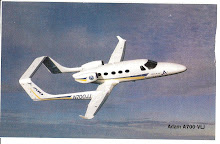




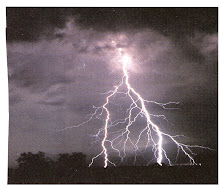

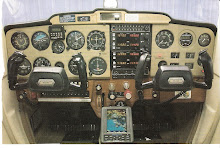
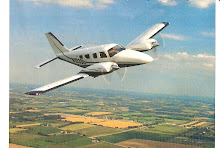
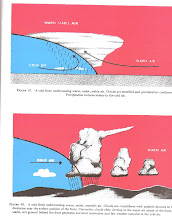
No comments:
Post a Comment